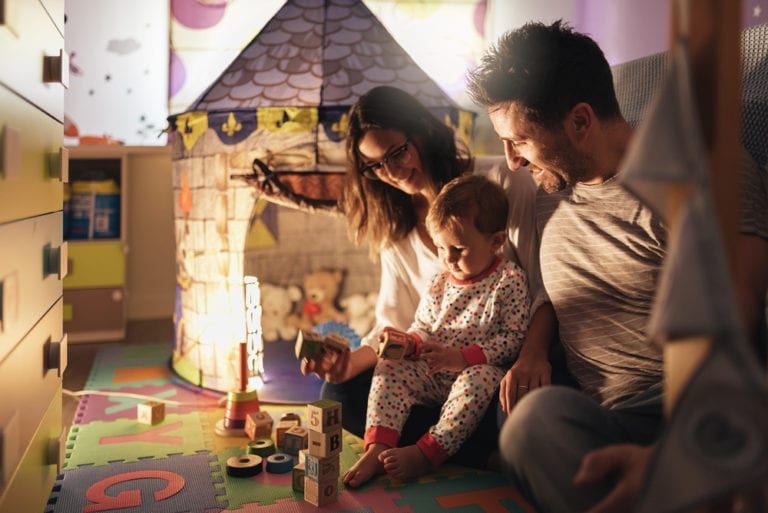Parenting Guide: How to Get a Teenager to Talk About Their Feelings
Disclosure: This post may contain affiliate links, meaning I may get a small commission if you decide to make a purchase through my links, at no cost to you.

How to get a teenager to talk about Ever feel like trying to get a teenager to talk about their feelings is as hard as cracking an encrypted code? Well, you’re not alone. Navigating the tumultuous waters of adolescence can leave any adult feeling lost at sea.
The thing is, teens are often desperate to share what’s going on inside but struggle with how. It’s our job, whether we’re parents or teachers or mentors, to provide them that safe harbor where they can dock and spill out all those bottled-up emotions.
How to get a teenager to talk about their feelings and inner thoughts?
This guide gives you real-world strategies to start open chats with your teenager. It’s all about building trust, understanding their self-esteem issues, and knowing when it might be time for professional help. Consider this guide as your roadmap to healthier emotional talks with the young folks in your life.
Table Of Contents:
- Why teenagers should open up about their feelings?
- The Risk of Containing Emotions
- Bottling Up: A Recipe for Disaster?
- Research Shows Sharing Emotions Leads to Better Mental Health
- The Nitty-Gritty Details of Negative Emotion Differentiation (NED)
- Understanding Teenagers’ Emotional Lives
- Creating an Environment for Open Conversations
- The Role of Empathy in Teen’s Emotional Expression
- Providing a Safe Space for Conversation
- Non-Verbal Ways for Teens to Process Emotions
- Navigating Big Emotions with Your Teenager
- When Professional Help is Needed for a Teen’s Mental Health
- Frequently Asked Questions
- Conclusion
Why teenagers should open up about their feelings?
We all know that the teenage years can be a roller coaster of emotions. One minute they’re on top of the world, and the next, they’re down in the dumps. It’s not just mood swings – it’s a part of growing up. But did you know that talking about these feelings is crucial for your teenager’s mental health? Let me explain why.
The Importance of Expressing Feelings
When teens bottle up their emotions, it can lead to stress and anxiety which are often precursors to depression – an increasingly common issue among today’s youth. In fact, according to CDC data, approximately 4.4 million children aged 3-17 have been diagnosed with anxiety.

Talking about feelings doesn’t just help alleviate these issues; it also helps them understand themselves better, build resilience against life’s ups and downs, and improve relationships with peers and family members alike by promoting empathy and understanding.
The Risk of Containing Emotions
Have you ever wondered why sometimes, your teenager seems to be as unresponsive as a stone statue? It’s not because they’ve suddenly developed an interest in miming. Rather, it could be due to them containing their emotions.
When life throws curveballs (and let’s face it, adolescence is full of those), we often find ourselves trying to contain our feelings. We hope that if we pack away the stress and anxiety into some corner of our minds, they might just disappear or get processed later. But unfortunately, this isn’t how emotional management works.
Bottling Up: A Recipe for Disaster?
The issue with bottling up emotions is that more often than not, instead of dealing with what’s already there in the ‘container’, we keep adding onto it. Imagine stuffing a suitcase until its seams are ready to burst – that’s essentially what happens when teenagers suppress their feelings continuously.

The Impenetrable Wall
As time goes on the ’emotional container’ keeps filling up without any release or processing taking place; eventually, its walls become so thickened and hardened that nothing can penetrate through them anymore. And guess who gets stuck behind these impenetrable walls? Your once chatty and expressive teen!
Avoiding Emotional Shutdowns
Preventing such shutdowns from happening in the first place requires open communication channels between parents and teens about how to express their feelings. It’s not always easy, but it’s essential for a happier and healthier family life.
So, the next time your teenager seems more like a mime than usual, remember that they might just be containing emotions. Don’t let those walls become impenetrable; encourage them to talk about what they’re feeling and help them navigate through this challenging phase of life.
Research Shows Sharing Emotions Leads to Better Mental Health

If you’re a parent of a teenager, chances are you’ve heard the phrase “I feel bad” more times than you can count. But what if I told you that encouraging your teen to be more specific about their feelings could actually improve their mental health?
New research from Emory University and the University of Rochester suggests just that. The study is based on something called negative emotion differentiation (NED), which is all about being able to identify and label different types of negative emotions.
The Nitty-Gritty Details of Negative Emotion Differentiation (NED)
NED isn’t some trendy new dance move or viral TikTok challenge; it’s a crucial skill for managing our emotions effectively, especially during stressful situations – something we know teenagers encounter often!
In this particular study, researchers examined 233 teens with an average age of 16. They initially conducted diagnostic interviews to screen for depression in these adolescents before asking them to report on their own emotions four times per day over seven days.
A Year And A Half Later…
A year and a half after the initial part of the study, researchers followed up with these same participants again – kind like those pesky telemarketers who never seem to take ‘no’ for an answer! However, unlike unwanted phone calls, this follow-up was vital as it helped determine any long-term outcomes related to emotional health.
Differentiating Feelings Can Make All The Difference!
The findings were quite fascinating: Teens who struggled with identifying specific negative emotions were found to be more susceptible to depressive symptoms following stressful life events. On the flip side, those who were adept at distinguishing their negative feelings demonstrated better emotional management after dealing with stress, thereby reducing their chances of developing depression.
So next time your teenager says “I feel bad”, you might want to dig a little deeper and encourage them to express exactly what they’re feeling. Who knows? It could just be the key to promoting better mental health!
Easing into Emotional Conversations

Getting teenagers to talk isn’t always easy though! They might feel uncomfortable or fear being judged or misunderstood. So how do we encourage our young ones to share what they’re feeling? Here are some tips:
- Create a safe space: Make sure your teen knows that home is a place where they can express themselves without judgment.
- Show Empathy: Even if you don’t fully understand what your teen is going through remember that validation goes long way in making them feel heard.
- Prompt Open-ended Questions: Rather than asking yes/no questions try asking more open-ended ones like “How did that make you feel?”
- Model Vulnerability: Show them it’s okay to be vulnerable by sharing your own feelings and experiences.
If you’re looking for more guidance on this topic, there are some fantastic resources out there. For instance, the book “How to Talk So Teens Will Listen & Listen So Teens Will Talk” offers practical advice on how parents can communicate effectively with their teenagers.
In a nutshell, talking about feelings isn’t just good for mental health – it’s crucial for overall well-being too! So let’s break down those barriers and get our teens talking!
Understanding Teenagers’ Emotional Lives
The rollercoaster of adolescence can feel like a mystery wrapped in an enigma, served with a side order of hormones. The importance of addressing mental health issues during this demanding developmental stage cannot be overstated.
If you’ve ever tried to decipher the cryptic texts from your teen or puzzled over their brooding silence, know that you’re not alone. Understanding the emotional lives of teenagers is no small feat but hey, we didn’t sign up for easy when we decided to raise humans.
Lisa Damour’s book on teenage emotions shines light into the often foggy realm of adolescent feelings. It highlights how empathy plays a crucial role in encouraging open conversations about emotions.
The Role of Empathy in Teen’s Emotional Expression
A quick tip – Teens aren’t looking for us to solve their problems (shocking I know.). They don’t want advice or questions when expressing their feelings; what they crave most is empathy and compassion.

You see, our kids are like porcupines on roller skates – sometimes prickly and always moving. Their moods may shift faster than sand dunes under desert winds. But remember: underneath all those spikes is still your kid who needs understanding and connection.
Talking with them isn’t just about words; it’s also about tuning into non-verbal cues – noticing that droop in shoulders after school or lackluster enthusiasm towards favorite activities could offer clues into what’s going on inside their hearts.
Sprinkle Some Magic of Empathy
Here’s a sprinkle of parenting magic – your empathetic response can act as an emotional balm for their adolescent angst. Rather than quickly attempting to address the issue, let’s take a moment to recognize and show approval for what they are experiencing.
Let’s be more than just problem solvers, let’s also be there to lend an ear. Sometimes a hug or a simple nod can say what words can’t. Our aim isn’t just about fixing things,
Understanding your teen’s emotions can feel like a complex puzzle. Remember, they’re not seeking solutions, but empathy and compassion from you. Pay attention to non-verbal cues for insights into their feelings. Respond with understanding rather than rushing to fix things; sometimes a hug or nod speaks volumes.
Creating an Environment for Open Conversations
Teenagers, like exotic birds, are unique and full of surprises. And just as you’d approach a rare bird with care and respect, so should you approach your teenager when it comes to talking about feelings.
If we think of trust as the seed that helps conversations bloom (stick with me here), then building trust with your teenager is crucial. This isn’t some high school biology experiment – nope. Trust needs real work. But don’t sweat it; I’ve got three key strategies up my sleeve.
Effective Reassurance Techniques

Dr. Lisa Damour, our friendly neighborhood psychologist suggests empathizing over reassuring teens struggling with low self-esteem – akin to lending them a comforting blanket rather than telling them they won’t feel cold.
We all remember being teenagers: It’s like trying to build IKEA furniture without instructions – confusing and frustrating.
- You might want to say “You’re doing great.” but instead try asking how they feel about their progress or what they found challenging in their day?
- Sometimes less is more—offer fewer words but loaded ones that show understanding and acceptance.
The Role of Empathy in Teen’s Emotional Expression
Moving on from reassurances, let’s talk empathy—the secret ingredient in the parenting cake (who doesn’t love cake?). Here’s where we need more listening skills than an FBI agent at a stakeout because often teenagers express themselves not looking for advice or questions but simply empathy. Imagine this: Your teen had an argument with their best friend. Instead of saying “You should apologize,” try something like, “That sounds tough. How are you feeling about it?” This shift can feel as good as getting the last slice of pizza at a party.
As adults, we might be tempted to offer solutions (it’s in our DNA), but remember when you were their age? Did you want an immediate solution or just someone who understood your feelings?
Providing a Safe Space for Conversation
Wrapping up our trio of trust-building strategies, let’s dive into crafting a…
Think of talking to your teen about feelings like approaching a rare bird – it needs trust and respect. Show them you understand, rather than just reassuring them; imagine giving a warm blanket instead of saying they won’t be cold. Promote their emotional sharing through empathy, not advice or probing questions – prioritize listening over speaking. Lastly, make sure to create a safe space for
Non-Verbal Ways for Teens to Process Emotions
Teens frequently communicate their sentiments in methods that don’t include verbal communication. They use non-verbal expressions like art, music, and physical activity as emotional relief outlets.
Physical Activity as Emotional Relief
Sometimes the gym or a brisk walk can be more than just exercise—it’s a chance for teens to blow off steam. Physical activities let them channel their emotions into something productive. A teen pounding out an intense workout might be saying more with each rep than they could ever put into words.
If your teen seems bottled up, suggest they take it out on the soccer field or basketball court. Encourage them to try yoga; its focus on mindfulness can help balance both body and mind.
The Power of Artistic Expression
Creativity is another powerful outlet for emotion. Our podcast episode touched upon this: drawing, painting, playing an instrument—even crafting memes—can all serve as healthy releases when verbal communication falls short.
A picture really does say a thousand words. If your teenager paints dark colors onto canvas after canvas, those strokes may hold valuable insights about what they’re feeling inside.
Dance Like Nobody’s Watching.
In our plugged-in world where everyone has earbuds firmly lodged in their ears most times of day (or night), we forget how transformative music can be not only passively listened to but actively danced to. Dancing allows teenagers—a demographic notorious for being glued to screens—to break free from virtual chains and embrace primal joy movement expressing themselves physically and rhythmically.
It’s like a secret language. They can pour all their feelings into each step, each sway of the hip. And who knows? They might even crack a smile.
Embrace Non-Verbal Expression
We must value non-verbal expression as much as we do verbal communication in our teens’ lives. The truth is, these modes of self-expression aren’t just useful; they’re vital.

It’s not just a passing thought that non-verbal outlets can offer emotional help to teens—it’s backed by science. These methods give them the means to navigate and understand complicated emotions.
Teens often express emotions non-verbally, using outlets like physical activity and art. Suggesting they channel their feelings into exercise or creative pursuits can help them process what they’re experiencing. Remember to value these modes of self-expression; it’s not just a thought, but scientifically proven that these methods aid in navigating complex emotions.
health issues. Given the potential for social media to negatively affect teenagers’ emotional health, it is critical that parents and educators find ways to help them manage their digital lives.
Navigating Big Emotions with Your Teenager
Teens are a whirlwind of emotions, and helping them navigate these feelings is like trying to control the wind. But don’t worry, we’ve got some strategies for you.
The Importance of Space in Emotional Navigation
Begin by considering the concept of personal space, which is essential for your adolescent to manage their emotions. No, not the kind filled with stars and planets – but personal space that your teen needs to process their feelings. It’s as crucial as oxygen for survival.
Giving teens room allows them time to figure things out on their own terms. Like bees making honeycomb within a hive; they need quiet and solitude at times. Life Kit on Apple Podcasts suggests it can be beneficial when dealing with resistance or defensiveness from teenagers.
Sometimes our instinct may be to rush in, but resist this urge. Think about yourself; do you want someone jumping into your thoughts every moment? Probably not. Teens aren’t any different – they need privacy too.
Tackling Resistance And Defensiveness Head-On
Resistance or defensiveness might feel like an impenetrable wall around your teenager’s heart sometimes. However, understanding why this happens can help us respond better during emotionally charged moments.
We all have emotional defenses that act like invisible shields protecting us from pain or discomfort – so cut your kid some slack next time they clam up.
Your Own Emotions Matter Too
You’re only human after all managing our own emotions while attempting to help our kids manage theirs is no small feat. Remember how flight attendants instruct passengers: ‘Put on your mask first before helping others.’ It’s the same principle here.
Respecting Boundaries And Privacy
A little respect goes a long way. As parents, we may feel like we have all-access passes to our children’s lives. But just as you wouldn’t want your teen rummaging through your stuff, they too need their boundaries respected.
But this isn’t about abandoning them, right?
Helping your teenager navigate their emotions can be tricky, but remember to respect their personal space and boundaries. Understand that resistance or defensiveness is a natural part of emotional defense, and try not to take it personally. Also, don’t forget about managing your own feelings in the process – you’re only human.
When Professional Help is Needed for a Teen’s Mental Health

Ever watched a teen throw their phone across the room after receiving bad news? That’s normal teenage frustration. But what about when that phone-throwing becomes daily, or destructive behaviors start creeping in?
How can we discern if our teenager’s emotions are excessive? It may feel like navigating through uncharted waters. Understanding different treatment options available, and recognizing signs of mental health issues in teenagers is crucial.
We need to know when it’s more than just ‘teenage angst’ – it could be time to seek professional help. Imagine trying to fix your car with no knowledge of mechanics; you wouldn’t want that engine exploding now, would you?
Navigating Through Emotional Turbulence
If your teen’s feelings begin affecting their daily life significantly, causing them distress or leading them into dangerous situations – ding ding. We have a winner for ‘time-to-seek-professional-help’. Like fishing in murky waters without knowing what you might pull up – frightening.
Sudden changes in behavior patterns such as withdrawal from social activities, plummeting grades, or drastic mood swings might not simply mean they’re ‘growing up’. These could be clear signs indicating deeper underlying issues.
Picking Up on Silent Signals
A change doesn’t always scream loud enough for us to hear it over our busy lives. Teens often communicate subtly (like cryptic text messages). They might show symptoms through physical ailments like persistent headaches and stomachaches without any medical cause found by doctors who seem baffled while holding their stethoscopes.
Other silent signals might include dramatic weight changes, constant fatigue, or an unusual need for reassurance and approval. It’s like trying to spot a chameleon in a jungle – tricky but possible.
Moving Forward with Professional Help
If you’re noticing these signs, it’s not the time to play detective. It’s time for professional help. Therapists can provide much-needed guidance during such difficult times, like an experienced captain steering us through stormy seas.
Teaming up with the right pro can make all the difference in your journey.
Spotting mental health issues in teens can be as tricky as finding a chameleon in the jungle. But, if you see dramatic changes like social withdrawal, mood swings or unexplained physical ailments, it’s not time to play detective. Instead, like calling an experienced captain during stormy seas – it’s time to seek professional help.
Frequently Asked Questions
Parenting a teenager can sometimes feel like trying to solve a complex puzzle with missing pieces. As parents, we often find ourselves asking questions like “Why won’t my teen talk about their feelings?” or “How can I better communicate with my teenager?”. Here at The Beehive Connection, we understand your concerns and have gathered some tips that might help you navigate this challenging phase.
How Can I Encourage My Teenager To Open Up?
The first step is always understanding. Remember what it was like being a teenager yourself – the pressure, the confusion, the emotional rollercoaster ride! Acknowledge these challenges when talking to your teen and let them know that their feelings are valid. A simple phrase such as “I understand how tough this must be for you” could go a long way in making them feel heard and understood.
What Should I Do When My Teen Shares Their Feelings?
Your response plays an essential role here. Listen attentively without interrupting or judging. Validate their emotions by expressing empathy towards what they’re going through; say something along the lines of “That sounds really hard” or “I’m sorry you’re feeling this way”. It’s also important to praise them for opening up – even if it’s about small things!
How Can We Improve Our Communication Overall?
Spend quality one-on-one time with your teen whenever possible – be it during car rides, meal times, or before bedtime chats (yes, teens still need those!). This not only strengthens your bond but also creates opportunities for open conversations. Remember: communication isn’t just about talking; non-verbal cues matter too! Show interest in their lives by maintaining eye contact, nodding your head, and mirroring their emotions. This shows that you’re fully present in the conversation.
Being a parent is no easy task – especially when it comes to teenagers! But remember: with patience, understanding, and open communication, you can help your teen navigate through this tumultuous phase while strengthening your bond with them.
Conclusion
Creating an atmosphere conducive to dialogue is not as difficult as it may appear, and requires empathy, patience, and understanding. You just need empathy, patience, and understanding.
You’ve learned how important it is to create an open environment for conversation and the role of empathy in emotional expression. Non-verbal ways can also help teens process emotions – music or art could be great outlets.
Social media has its impact on your teen’s emotional expression too. Recognizing this will guide you on how to better support them during their digital interactions.
Big emotions require space for navigation, so giving your teen that room is crucial. And if things get tough, never hesitate to seek professional help.
Your journey towards getting a teenager to talk about their feelings might have ups and downs but remember: you’re not alone in these seas of adolescence! The right strategies are all here waiting for you!
GET FREE ACCESS TO OUR LIBRARY OF FREE PRINTABLES AND RESOURCES!
Enter Your Name and Email for FREE Access to our Library of FREE Home and Family Printables Series!





